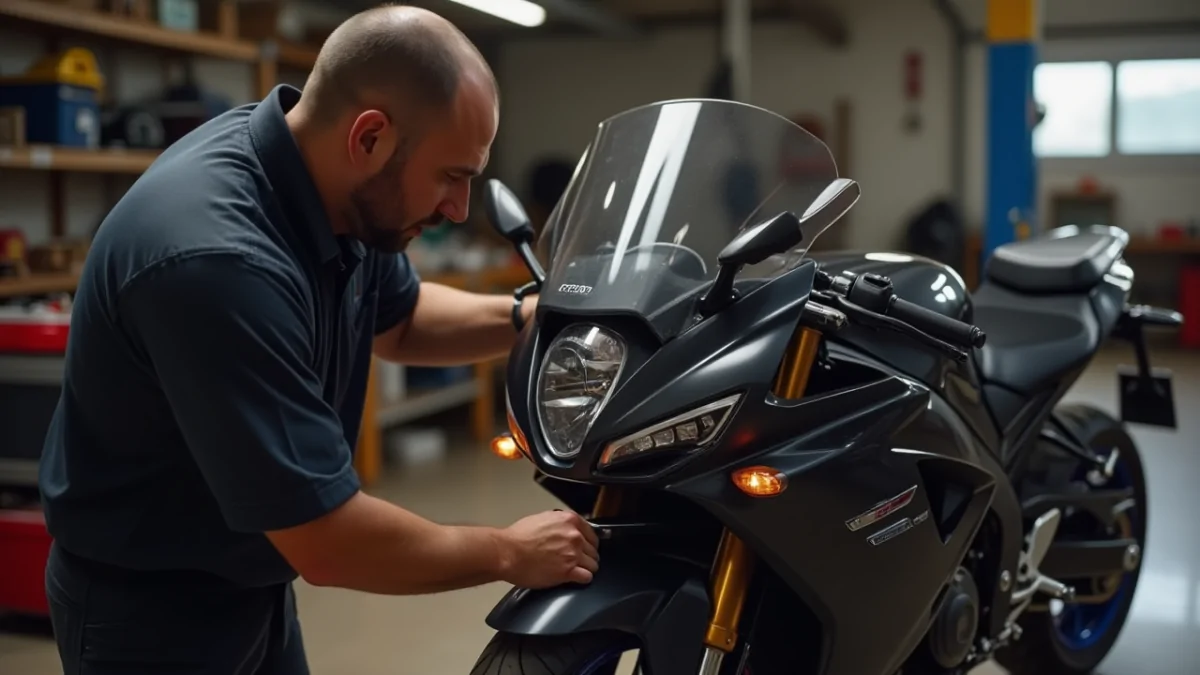
Having a motorcycle is a thrilling adventure, but it also means taking care of your vehicle in top-notch condition. Proper bike maintenance not only increases the lifespan of your bike but also guarantees your safety while riding. Motorcycle repair is not merely about mending issues; prevention is also part of it, as people might think. A routine repair and maintenance schedule is essential for a smooth and hassle-free ride throughout the year. Here is an extensive motorcycle repair checklist to ensure your bike is in optimal condition, regardless of the season.
Motorcycle Repair Tip: Check and Replace the Engine Oil
The heart of your motorcycle is the engine, and its lifeblood is oil. One of the most important maintenance procedures is checking and replacing the engine oil regularly. Low or dirty engine oil can make your engine overheat or deteriorate early. It is best to check your oil every 1,000 miles and replace it every 3,000 to 5,000 miles, depending on your make and model of bike. Change the oil filter concurrently for optimal engine performance and protection for the engine. Utilize the oil type specified by your maker and responsibly dispose of the old oil.
Brake System Maintenance in Motorcycle Repair
Brakes are your greatest asset out there on the road. A good braking system will allow you to stop safely and prevent accidents from happening. Check your brake pads, rotors, and brake fluid levels regularly. Low fluid levels or worn-out brake pads can greatly diminish braking capability.
If your brakes are spongy or soft, it may be time to bleed the brake lines. Change the brake fluid according to the recommendation, typically every one or two years, and inspect for leaks in the master cylinder and in the brake lines.
Motorcycle Tire Inspection for Safe Riding
Your tires are your sole contact with the road, so their maintenance is paramount. Check them for bulges, embedded objects, cracks, and tread depth. Low tread depth impacts grip, particularly in the wet.
Tire pressure is supposed to be inspected at least once every week and before any long trip. Under-inflated tires decrease fuel efficiency, cause a rough ride, and compromise the safety of the motorcyclist. Check the recommended tire pressure levels in your motorcycle’s manual.
Battery Care for Effective Motorcycle Repairs
A low or dead battery is one frequent reason for motorcycle breakdowns, especially after periods of long-term disuse. Checking the battery every month can avoid surprises. Inspect the terminals for corrosion and clean them if needed. If the battery is over two years old, think about checking its voltage with a multimeter. In the winter or during periods of extended storage, charge the battery with a trickle charger to maintain it in good health.
Chain Lubrication and Cleaning in Motorcycle Maintenance
The drive chain sends power from the engine to the rear wheel and is therefore critical to performance. A loose, rusty, or dry chain can result in an accident or costly repair. Inspect the chain tension often and adjust accordingly. Clean the chain every 500 to 700 miles and lubricate with a top-notch chain lube. Check sprockets for wear and replace them and the chain if there are any broken teeth or signs of deterioration.
Electrical System Check for Reliable Motorcycle Repair
Working lights and electrical units are critical to being able to see and communicate while driving. Check your headlights, taillights, turn signals, and brake lights regularly. Worn-out bulbs or wiring can endanger you and others on the road. Inspect all dashboard gauges and horn operation. Flickering or dim lights may indicate that you should change the bulb or check the electrical connections and battery condition.
Replace or Clean the Air Filter
Your engine needs clean air in order to be able to run well. A dirty air filter can decrease performance and cause fuel consumption. Check your air filter every 5,000 to 10,000 miles, depending on your riding conditions.
If the filter appears dirty or clogged, clean it if it’s reusable, or replace it with a new one. Keeping the air filter clean ensures optimal fuel combustion and better engine efficiency.
Suspension System Checks for Smooth Motorcycle Performance
A well-maintained suspension system provides a smooth and stable ride. Look for oil leaks around the front forks and rear shock absorbers. Listen for any abnormal sounds or roughness, which may be the result of worn parts. Ensure the proper levels of fork oil and replace any worn-out bushings or seals when necessary. Suspension adjustment can also be tweaked depending on your riding preference or weight for enhanced comfort and handling. If your bike is liquid-cooled, having proper coolant levels is crucial to avoid overheating. Check the coolant reservoir and add the appropriate mixture if needed. Coolant needs to be changed every two years or as the manufacturer directs. Never use tap water or mix incompatible substances, as this may ruin the cooling system.
Conduct a General Check and Clean-Up
Routine visual checks can assist you in detecting minor problems before they turn into major issues. However, make sure to inspect for loose bolts, oil leaks, rust patches, or odd noises. Moreover, clean your motorcycle frequently to avoid grime accumulation and detect damage more readily. Polishing and waxing your motorbike not only makes your motorbike appear pleasant but also shields the paint and chrome surfaces from corrosion and damage due to UV light.
Conclusion
Staying on top of your motorcycle repair checklist isn’t just about avoiding costly breakdowns, it’s about riding with confidence. By regularly maintaining your engine, brakes, tires, battery, and other vital systems, you’ll ensure your motorcycle stays in peak condition all year long. Preventive motorcycle repair is a smart investment in your safety, performance, and the longevity of your machine. With a little care and regular maintenance, your motorcycle will treat you to miles of memorable rides. As Dr. Ralphs sagely suggests, regular care and prompt repairs are the secrets to keeping your ride running reliably and safely for every ride.
